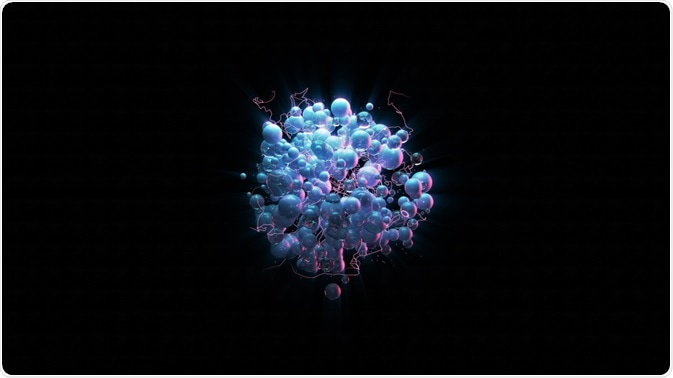Being able to accurately identify and analyze cells, as well as their characteristics, is a key part of medical and life sciences research. One technique that is often employed in laboratories worldwide is flow cytometry.
As useful as flow cytometry is, it is still associated with several limitations. To that end, this article will how the quantum dots (QDs) can be utilized to improve the sensitivity of flow cytometry.

Image Credit: BokehStore / Shutterstock.com
What is flow cytometry?
Flow cytometry is an analytical technique that detects and measures the characteristics of cells in a population. This technique is used to analyze and provide data on both the chemical and physical properties of these cells.
Flow cytometers can measure thousands of cells individually in a high-throughput manner per minute. To do this, a sample of cells is passed through the machine in a liquid. The cells are then detected and characterized through the use of a laser.
There are five parts to a flow cytometer, which include a flow cell, measuring system, detector, amplification system, and a computer that analyzes the produced signals. Flow cytometers are like microscopes; instead of providing an image, these systems provide automated quantification of specified optical parameters on a cell-by-cell basis. Modern flow cytometers are incredibly complex instruments with multiple lasers and fluorescence detectors.
Flow cytometry is used to measure many parameters including apoptosis, cell viability, enzymatic activity, nuclear antigens, oxidative burst, and total deoxyribonucleic acid (DNA) or ribonucleic acid (RNA) content of cells. A wide range of fluorophores is often used in flow cytometry, which is excited by the equipment’s laser and fluoresces. This fluorescence is then measured, captured, and analyzed to provide quantifiable data to the user.
What are QDs?
QDs are particles with properties that are between bulk semiconductors and molecules or atoms. Typically, QDs are a few nanometers in size; however, their properties differ from larger particles due to the principles of quantum mechanics.
When QDs are illuminated by ultraviolet (UV) light, their electrons are excited, thus leading to light emission. The color of the light produced depends on the energy difference between the conductance and valence bands.
QDs are a central topic in nanotechnology. To this end, QDs have been utilized for a wide range of applications in biology, photovoltaic devices, solar cells, light-emitting diodes, photodetector devices, and, increasingly, flow cytometry.
Quantum Dots , what are they? How they work and what their Applications?
Using QDs in flow cytometry
QDs used in biological applications are composed of three different parts. These include a core, which is normally cadmium selenide, that is coated with a semiconductor outer shell, such as zinc sulfide.
The core of QDs can range in size from 3-10 nanometers (nm). Notably, the fluorescence emission of the QD is defined by the shell size.
The third layer of the QD is a soluble polymer that also incorporates specific functional groups such as chemical compounds and proteins. Taken together, these functional groups allow the QDs to specifically bind to the target cell or particle.
A common issue associated with traditional fluorescent dyes is the limited resolution of the detected fluorophores. Background fluorescence and high degrees of autofluorescence can interfere with the signal.
QDs provide a solution to this issue due to their unique properties. Multicolor optical detection is possible using QDs as well. Additionally, the small size of these particles also makes them ideal for suspension in solution.
Advantages of QDs
There are many advantages associated with the use of QDs in flow cytometry, some of which include:
- Improved multiplexing abilities
- Enhanced photostability
- Reduction in inter-channel crosstalk
- High degrees of brightness
- Enhanced compatibility
- Enhanced tuneability
Disadvantages
In addition to their advantageous properties, QDs are also associated with certain limitations. These include their large size, which can limit their diffusion across membranes.
QDs can also be potentially toxic; however, heavy metal and cadmium-free QDs are available to avoid this issue. The photostability of QDs can also be limiting, particularly when it comes to experiments where dyes need to disappear at certain points. QDs can also experience yield deterioration; however, this can be circumvented by detection systems with improved sensitivity.
Conclusion
The incorporation of QDs into flow cytometry experiments has significantly increased over the past several years. Their unique properties allow for QDs to elicit several advantages as compared to traditional fluorescent dyes.
The future of flow cytometry and QDs will doubtless become more intertwined as both technologies develop over the coming decades.
References
Further Reading
Last Updated: Aug 17, 2021